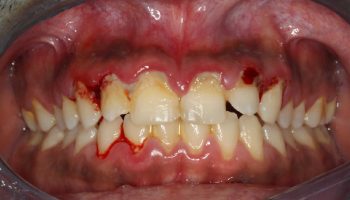What is triskaidekaphobia
Triskaidekaphobia means strong, irrational fear of the number 13, including the year 2013 1. A phobia is a type of anxiety disorder. Phobia is a strong, irrational fear of something that poses little or no real danger.
There are many other specific phobias. Acrophobia is a fear of heights. Agoraphobia is a fear of public places, and claustrophobia is a fear of closed-in places. If you become anxious and extremely self-conscious in everyday social situations, you could have a social phobia. Other common phobias involve tunnels, highway driving, water, flying, animals and blood.
People with phobias try to avoid what they are afraid of. If they cannot, they may experience
- Panic and fear
- Rapid heartbeat
- Shortness of breath
- Trembling
- A strong desire to get away
Phobias usually start in children or teens, and continue into adulthood. The causes of specific phobias are not known, but they sometimes run in families.
Not all phobias need treatment. But if a specific phobia affects your daily life, several therapies are available that can help you work through and overcome your fears — often permanently. Options include medicines, therapy or both.
An unreasonable fear can be an annoyance — having to take the stairs instead of an elevator or driving the long way to work instead of taking the freeway, for instance — but it isn’t considered a specific phobia unless it seriously disrupts your life. If anxiety negatively affects functioning in work, school or social situations, talk with your doctor or a mental health professional.
Childhood fears, such as fear of the dark, of monsters or of being left alone, are common, and most children outgrow them. But if your child has a persistent, excessive fear that interferes with daily functioning at home or school, talk to your child’s doctor.
Most people can be helped with the right therapy. And therapy tends to be easier when the phobia is addressed right away rather than waiting.
Triskaidekaphobia symptoms
Triskaidekaphobia means strong, irrational fear of the number 13, including the year 2013 1.
A specific phobia involves an intense, persistent fear of a specific object or situation that’s out of proportion to the actual risk. There are many types of phobias, and it’s not unusual to experience a specific phobia about more than one object or situation. Specific phobias can also occur along with other types of anxiety disorders.
Common categories of specific phobias are a fear of:
- Situations, such as airplanes, enclosed spaces or going to school
- Nature, such as thunderstorms or heights
- Animals or insects, such as dogs or spiders
- Blood, injection or injury, such as needles, accidents or medical procedures
- Others, such as choking, vomiting, loud noises or clowns
Each specific phobia is referred to by its own term. Examples of more common terms include acrophobia for the fear of heights and claustrophobia for the fear of confined spaces.
No matter what specific phobia you have, it’s likely to produce these types of reactions:
- An immediate feeling of intense fear, anxiety and panic when exposed to or even thinking about the source of your fear
- Awareness that your fears are unreasonable or exaggerated but feeling powerless to control them
- Worsening anxiety as the situation or object gets closer to you in time or physical proximity
- Doing everything possible to avoid the object or situation or enduring it with intense anxiety or fear
- Difficulty functioning normally because of your fear
- Physical reactions and sensations, including sweating, rapid heartbeat, tight chest or difficulty breathing
- Feeling nauseated, dizzy or fainting around blood or injuries
- In children, possibly tantrums, clinging, crying, or refusing to leave a parent’s side or approach their fear
Triskaidekaphobia complications
Although specific phobias may seem silly to others, they can be devastating to the people who have them, causing problems that affect many aspects of life.
- Social isolation. Avoiding places and things you fear can cause academic, professional and relationship problems. Children with these disorders are at risk of academic problems and loneliness, and they may have trouble with social skills if their behaviors significantly differ from their peers.
- Mood disorders. Many people with specific phobias have depression as well as other anxiety disorders.
- Substance abuse. The stress of living with a severe specific phobia may lead to abuse of drugs or alcohol.
- Suicide. Some individuals with specific phobias may be at risk of suicide.
Triskaidekaphobia causes
Much is still unknown about the actual cause of specific phobias. Causes may include:
- Negative experiences. Many phobias develop as a result of having a negative experience or panic attack related to a specific object or situation.
- Genetics and environment. There may be a link between your own specific phobia and the phobia or anxiety of your parents — this could be due to genetics or learned behavior.
- Brain function. Changes in brain functioning also may play a role in developing specific phobias.
Risk factors for triskaidekaphobia
These factors may increase your risk of specific phobias:
- Your age. Specific phobias can first appear in childhood, usually by age 10, but can occur later in life.
- Your relatives. If someone in your family has a specific phobia or anxiety, you’re more likely to develop it, too. This could be an inherited tendency, or children may learn specific phobias by observing a family member’s phobic reaction to an object or a situation.
- Your temperament. Your risk may increase if you’re more sensitive, more inhibited or more negative than the norm.
- A negative experience. Experiencing a frightening traumatic event, such as being trapped in an elevator or attacked by an animal, may trigger the development of a specific phobia.
- Learning about negative experiences. Hearing about negative information or experiences, such as plane crashes, can lead to the development of a specific phobia.
Triskaidekaphobia prevention
If you have a specific phobia, consider getting psychological help, especially if you have children. Although genetics likely plays a role in the development of specific phobias, repeatedly seeing someone else’s phobic reaction can trigger a specific phobia in children.
By dealing with your own fears, you’ll be teaching your child excellent resiliency skills and encouraging him or her to take brave actions just like you did.
Triskaidekaphobia diagnosis
Diagnosis of triskaidekaphobia is based on a thorough clinical interview and diagnostic guidelines. Your doctor will ask questions about your symptoms and take a medical, psychiatric and social history. He or she may use the diagnostic criteria in the Diagnostic and Statistical Manual of Mental Disorders (DSM-5), published by the American Psychiatric Association.
Triskaidekaphobia treatment
The best treatment for triskaidekaphobia is a form of psychotherapy called exposure therapy. Sometimes your doctor may also recommend other therapies or medication. Understanding the cause of a phobia is actually less important than focusing on how to treat the avoidance behavior that has developed over time.
The goal of treatment is to improve quality of life so that you’re no longer limited by your phobias. As you learn how to better manage and relate to your reactions, thoughts and feelings, you’ll find that your anxiety and fear are reduced and no longer in control of your life. Treatment is usually directed at one specific phobia at a time.
Psychotherapy
Talking with a mental health professional can help you manage your triskaidekaphobia. Exposure therapy and cognitive behavioral therapy are the most effective treatments.
- Exposure therapy focuses on changing your response to the object or situation that you fear. Gradual, repeated exposure to the source of your specific phobia and the related thoughts, feelings and sensations may help you learn to manage your anxiety. For example, if you’re afraid of elevators, your therapy may progress from simply thinking about getting into an elevator, to looking at pictures of elevators, to going near an elevator, to stepping into an elevator. Next, you may take a one-floor ride, then ride several floors, and then ride in a crowded elevator.
- Cognitive behavioral therapy (CBT) involves exposure combined with other techniques to learn ways to view and cope with the feared object or situation differently. You learn alternative beliefs about your fears and bodily sensations and the impact they’ve had on your life. CBT emphasizes learning to develop a sense of mastery and confidence with your thoughts and feelings rather than feeling overwhelmed by them.
Medications
Generally psychotherapy using exposure therapy is successful in treating triskaidekaphobia. However, sometimes medications can help reduce the anxiety and panic symptoms you experience from thinking about or being exposed to the object or situation you fear.
Medications may be used during initial treatment or for short-term use in specific, infrequently encountered situations, such as flying on an airplane, public speaking or going through an MRI procedure.
- Beta blockers. These drugs block the stimulating effects of adrenaline, such as increased heart rate, elevated blood pressure, pounding heart, and shaking voice and limbs that are caused by anxiety.
- Sedatives. Medications called benzodiazepines help you relax by reducing the amount of anxiety you feel. Sedatives are used with caution because they can be addictive and should be avoided if you have a history of alcohol or drug dependence.
Lifestyle and home remedies
Ask your doctor or other health care professional to suggest lifestyle and other strategies to help you manage the anxiety that accompanies triskaidekaphobia. For example:
- Mindfulness strategies may be helpful in learning how to tolerate anxiety and reduce avoidance behaviors.
- Relaxation techniques, such as deep breathing, progressive muscle relaxation or yoga, may help cope with anxiety and stress.
- Physical activity and exercise may be helpful in managing anxiety associated with specific phobias.
Coping and support
Professional treatment can help you overcome your triskaidekaphobia or manage it effectively so you don’t become a prisoner to your fears. You can also take some steps on your own:
- Try not to avoid feared situations. Practice staying near feared situations as frequently as you can rather than avoiding them completely. Family, friends and your therapist can help you work on this. Practice the techniques you learn in therapy and work with your therapist to develop a plan if symptoms get worse.
- Reach out. Consider joining a self-help or support group where you can connect with others who understand what you’re going through.
- Take care of yourself. Get enough rest, eat healthy and try to be physically active every day. Avoid caffeine, as it can make anxiety worse. And don’t forget to celebrate successes as things get better.
Helping your child cope with fears
As a parent, there’s a lot you can do to help your child cope with fears. For example:
- Talk openly about fears. Let your child know that everyone has scary thoughts and feelings sometimes, but some do more than others. Don’t trivialize the problem or belittle your child for being afraid. Instead, talk to your child about his or her thoughts and feelings and let your child know that you’re there to listen and to help.
- Don’t reinforce specific phobias. Take advantage of opportunities to help children overcome their fears. If your child is afraid of the neighbor’s friendly dog, for example, don’t go out of your way to avoid the animal. Instead, help your child cope when confronted with the dog and show ways to be brave. For example, you might offer to be your child’s home base, waiting and offering support while your child steps a little closer to the dog and then returns to you for safety. Over time, encourage your child to keep closing the distance.
- Model positive behavior. Because children learn by watching, you can demonstrate how to respond when confronted by something your child fears or that you fear. You can first demonstrate fear and then show how to work through the fear.
If your child’s fears seem to be excessive, persistent and interfere with daily life, talk with your child’s doctor for advice on whether professional diagnosis and treatment are indicated.
References




